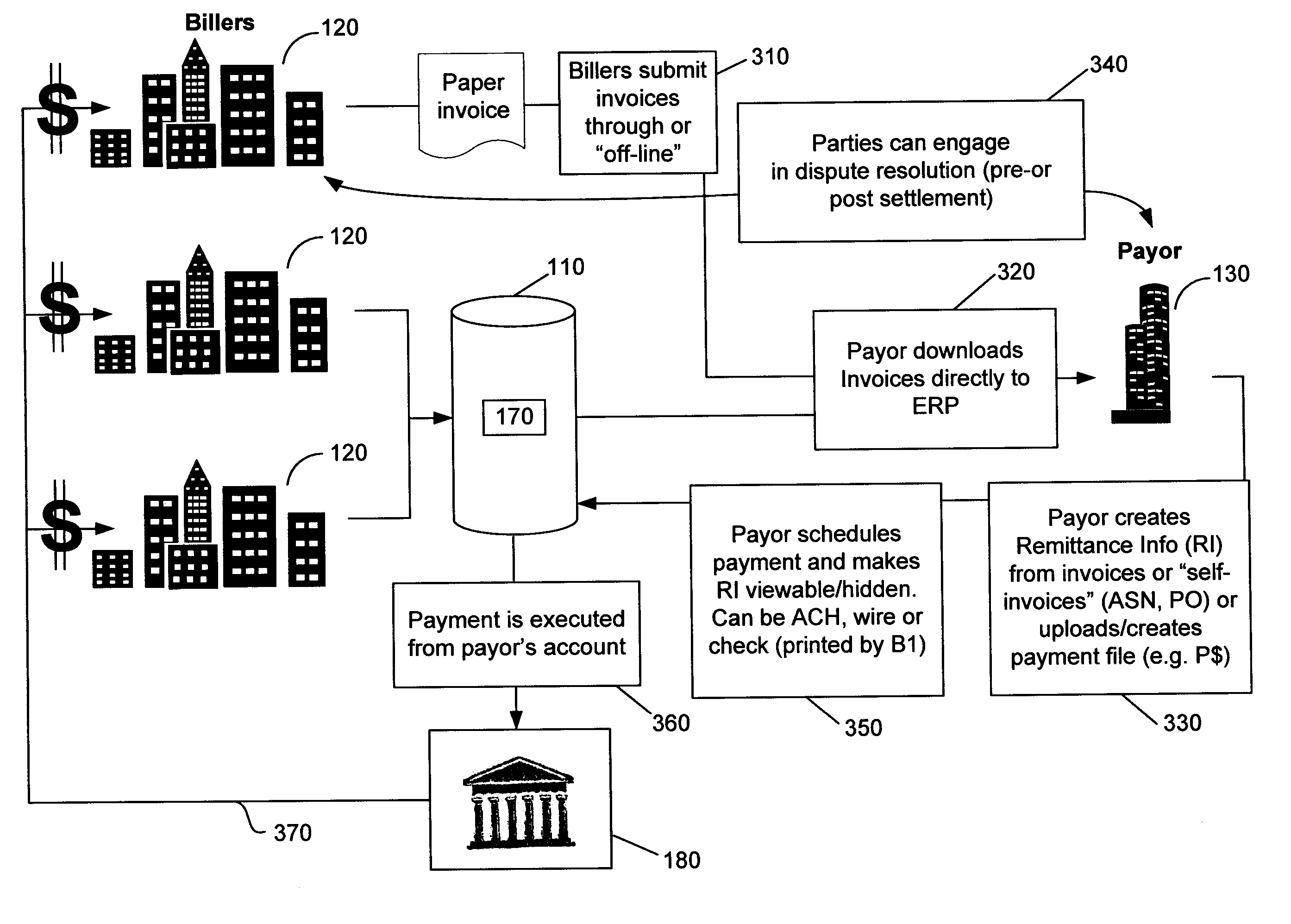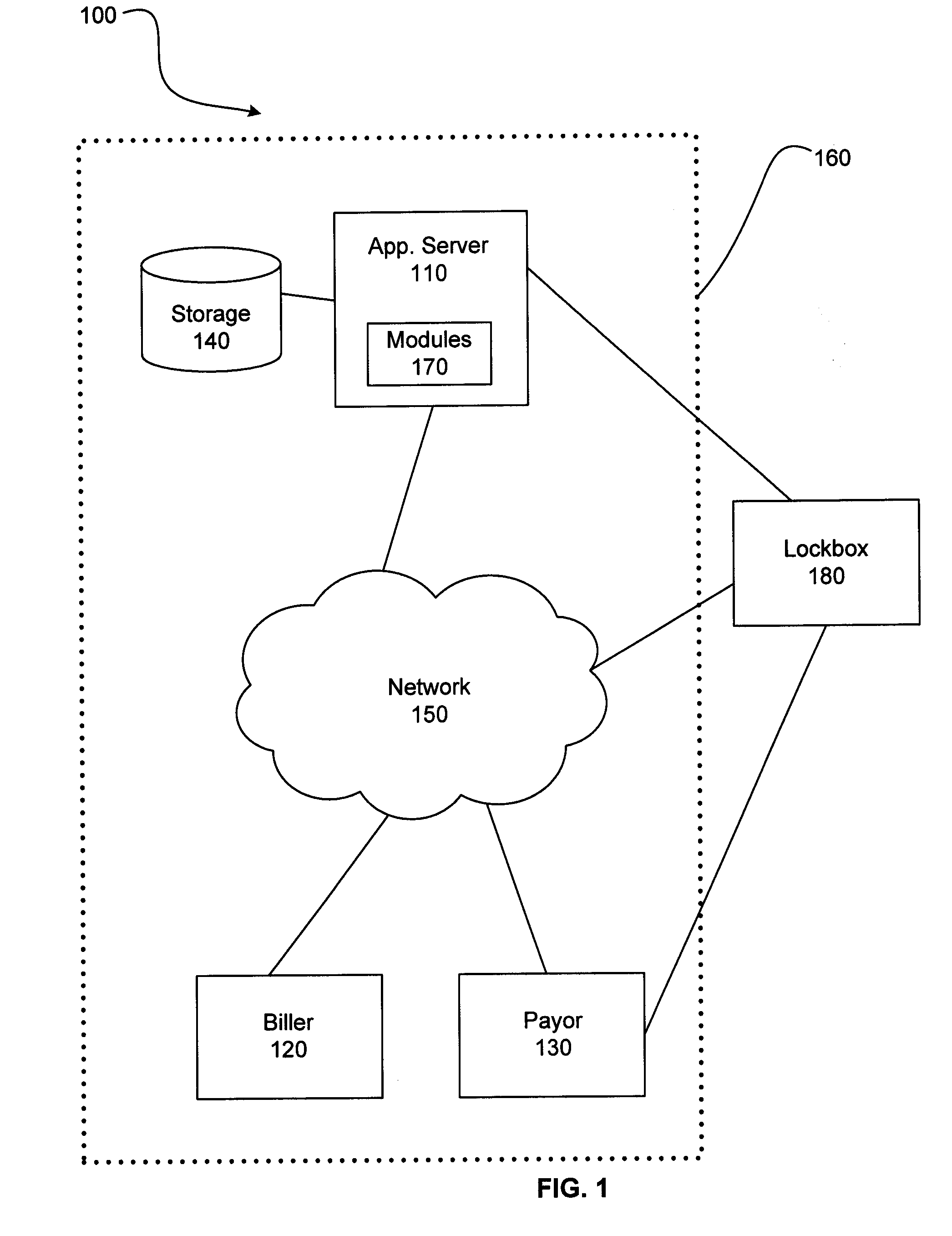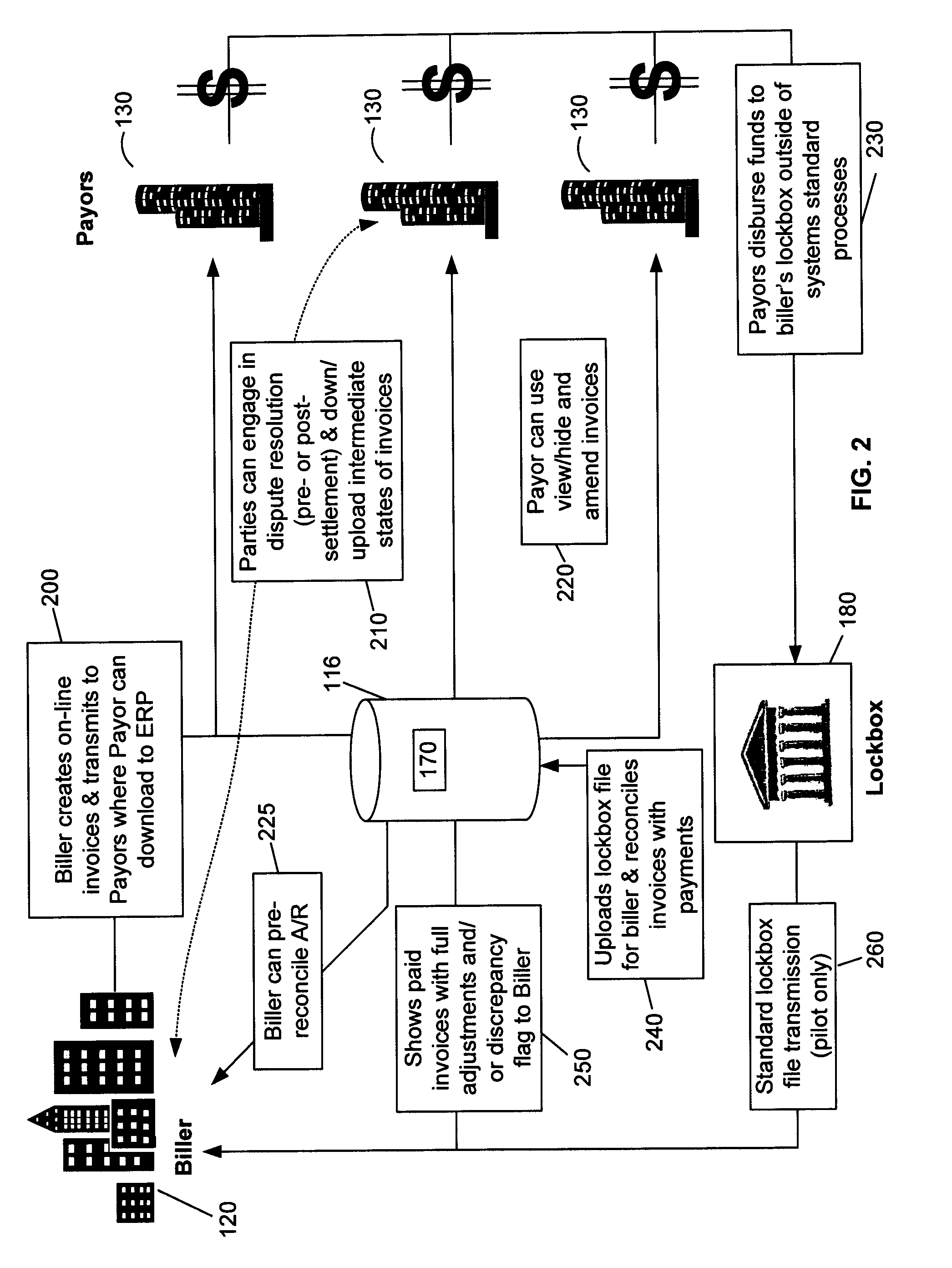Payor focused business to business electronic invoice presentment and accounts payable reconciliation system and method
- Summary
- Abstract
- Description
- Claims
- Application Information
AI Technical Summary
Benefits of technology
Problems solved by technology
Method used
Image
Examples
Embodiment Construction
[0030]For purposes of illustration, a system and method according to exemplary embodiments of the present invention are described herein.
[0031]The above-identified figures and the following description provide an overview of a biller hub implementation and a payor hub implementation of an electronic invoice presentment and reconciliation invention. The invention may rely on industry-standard software components for some basic processing functions. The process solution may be implemented in software, firmware or other computer readable formats and deployed in secure operational site or other locations.
[0032]According to an embodiment of the invention, various components of system 100 (e.g., biller 120, payor 130, etc.) may be separate entities such as individuals, corporations or limited liability companies. Other embodiments, in compliance with applicable laws and regulations, may also be used. In addition, it is to be understood that biller 120, payor 130 and other various entities...
PUM
 Login to View More
Login to View More Abstract
Description
Claims
Application Information
 Login to View More
Login to View More - R&D
- Intellectual Property
- Life Sciences
- Materials
- Tech Scout
- Unparalleled Data Quality
- Higher Quality Content
- 60% Fewer Hallucinations
Browse by: Latest US Patents, China's latest patents, Technical Efficacy Thesaurus, Application Domain, Technology Topic, Popular Technical Reports.
© 2025 PatSnap. All rights reserved.Legal|Privacy policy|Modern Slavery Act Transparency Statement|Sitemap|About US| Contact US: help@patsnap.com



